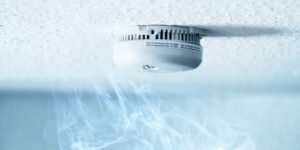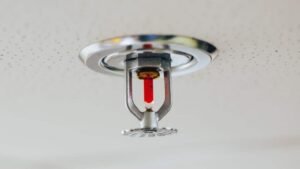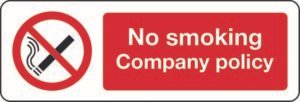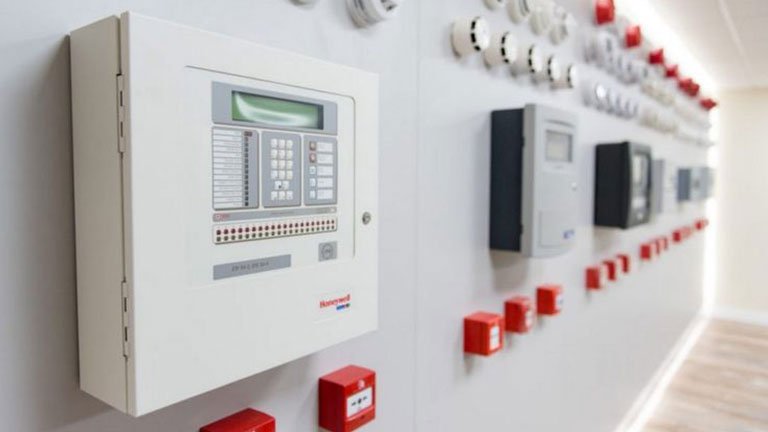
Fire prevention in commercial buildings is crucial for ensuring the safety of occupants, protecting assets, and maintaining business continuity. The implementation of fire prevention in commercial buildings, industrial sites or even establishments receiving the public (such as retail stores) is mandatory. Indeed, the Fire Prevention specifies that the head of the establishment or the company director must train his staff in the actions and instructions to follow to avoid fires in the workplace. They must, in addition, ensure that all the devices and equipment necessary to prevent this risk are in place.
They are therefore the guarantor of the proper training of staff in fire prevention, as well as the compliance of the premises according to the fire regulations in Oman . In addition, the drafting of fire instructions is mandatory for companies and places receiving more than 50 people: the manager of the company or establishment must also ensure that they are respected.
In addition, there are obligations that concern project managers and building contractors: the housing and construction code states that the building must be designed to resist fire and its plans provided to facilitate the evacuation of staff and/or the public it receives. Finally, there are other standards to be respected for the materials and installations implemented or certain types of buildings such as high-rise commercial buildings.
Fire-fighting and Fire Prevention Resources
Fire prevention in commercial buildings is the responsibility of the owner and or if the building has been rented, hence the tenant. Therefore, the owner and the tenant are required to take all necessary measures to ensure that any outbreak of fire can be effectively fought. As such, sufficient fire extinguishers must be installed and at least one extinguisher per 200 m2 of floor or two extinguishers for each floor maintained in good condition. They must be adapted to the specific risks that may be present (electrical risk, etc.).

Fire alarm: the implementation of suitable technical means!
To warn the people as the start of fire and consequently prevent it from expansion , it is important to set up a Fire Safety System, i.e. all the information and equipment necessary for fire protection in an establishment. While the Oman law provides for general regulations on fire prevention applicable to all commercial buildings, it implies specific regulations for Establishments Receiving the Public (hotels, shops, restaurants, bars, exhibition halls, performance halls, indoor sports facilities, libraries, schools, etc.) and Industrial establishments. Furthermore, Fire compliance laws in Oman states that: “Owners of all residential and commercial buildings must install fire safety systems that are approved by the Royal Oman Police’s civil defence unit.”
For establishments receiving fewer than 20 people, you must have installed:
- Fire safety equipment (extinguishers)
- An alarm system (smoke or heat detectors, sirens)
- Evacuation instructions and plans
- For establishments receiving 20 people or more, it is necessary to supplement this fire protection with:
- A people evacuation system (emergency doors, safety lighting)
- A partitioning system (automatic door closing)
- A smoke extraction system (air vents)
- A check of electrical, gas and heating installations according to standards
Investing in appropriate safety equipment is essential to reduce the risk of fire. This may include installing automatic detection and suppression systems, such as fire alarms and sprinklers. Additionally, clear and well-communicated emergency procedures, such as evacuation plans and designated assembly points, are essential to ensure a quick and effective response in the event of a fire.

Why should a company be concerned about fire risks?
Much more than a simple legal obligation, fire prevention in commercial buildings is everyone’s business. It is a major safety and human issue.
A legal obligation
The labor code stipulates that the head of the premises must plan periodic inspections of the equipment but also exercises (every 6 months). This is why the company has the obligation to equip itself with a fire safety system such as the installation of alarm systems and any other suitable communication equipment.
To see the full list of codes and standards regarding fire prevention in commercial buildings you can consult the The National Fire Protection Association (NFPA) website.
And as we told you above, the head of the establishment must also ensure that his premises have fire prevention means to protect its staff (fire extinguishers, smoke extraction system, dry or wet risers, armed fire hydrants, signage and marking to facilitate the evacuation of staff, etc.). Some devices are mandatory for all commercial buildings while others are adapted to their specificities (number of people accommodated, type of production, location, etc.).
A moral obligation
It is important to make this type of prevention a priority, because beyond the legislative and judicial framework, it is a moral obligation. The very safety of the company’s employees and visitors is at stake. By adopting good practices, you are helping to save lives.

A financial obligation
The human and financial costs incurred by a fire in a commercial building are most often exorbitant. It is unfortunately not uncommon for a fire to cause the partial or total destruction of the premises with the loss of its stock, which leads, at best, to a temporary closure of the building and, at worst, to its permanent closure. Added to this are the wage costs: the fire is synonymous with reduced or no activity and therefore partial or total unemployment of your employees. This economic factor is far from being anecdotal: in almost 70% of cases, this type of disaster leads to the disappearance of the company.
Smart Modern Engineering will guarantee installation, maintenance, servicing, repair, verification and control of equipment regarding your fire safety and prevention services.
Frequently Asked Questions (FAQs)
We can distinguish different systems depending on whether they are technical, organizational or human resources:
- Technical resources: all legal and mandatory fire detection and prevention devices (extinguisher, smoke detector, clearance, smoke extraction system, etc.).
- Organizational resources: displaying instructions and rules in force, the evacuation plan, actions to be taken in the event of a fire, signage, the obligation to produce a safety register, etc.
- Human resources: communication and training of employees, designation of a safety representative, etc.
At least one extinguisher per 200 m2 of floor or two extinguishers for each floor.
Yes, all floors must be equipped with Emergency guidance signs. It should also be dully noted that the barriers and shelves of presentation should be organized so that they will not obstruct escape means or block the visibility of the guidance signs.



